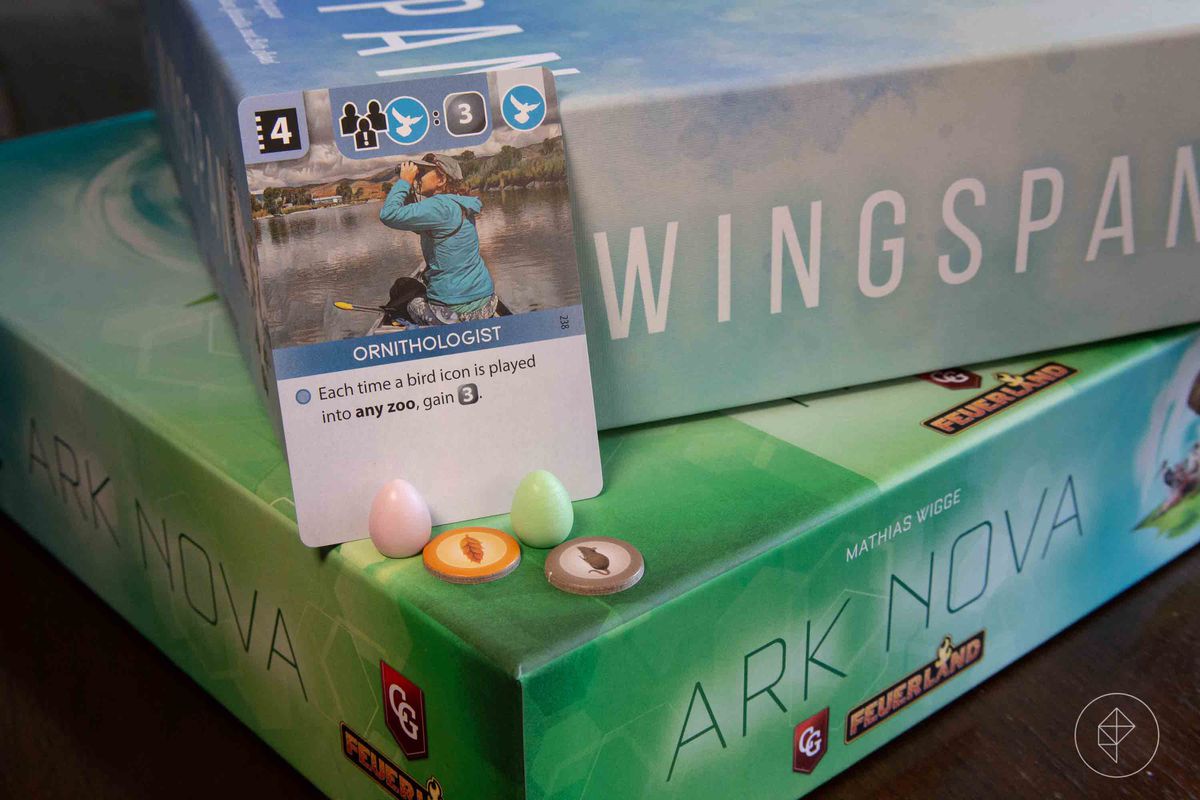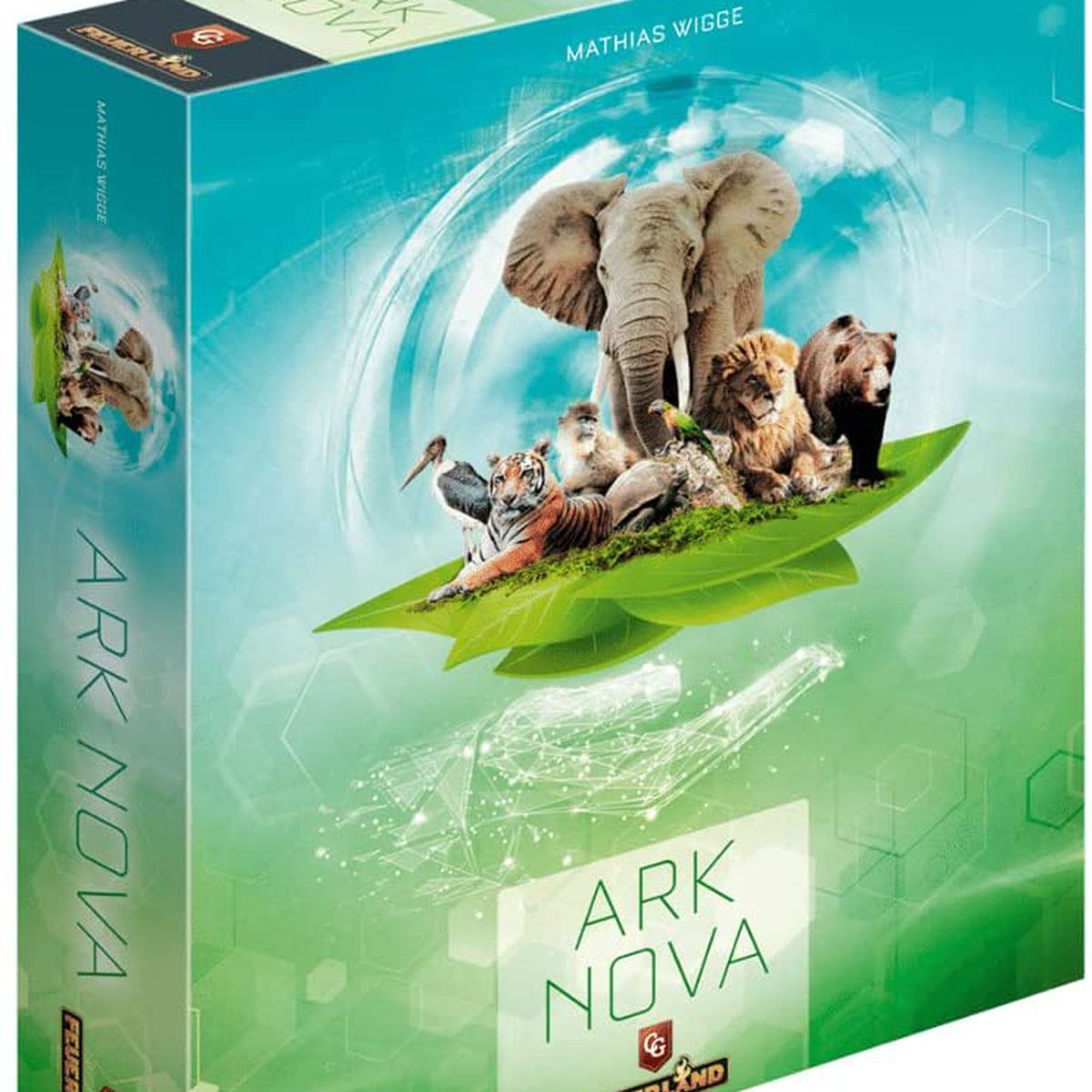Ark Nova is an excellent board game, but too complex for new players

Ark Nova is the most hyped new tabletop game since Wingspan burst onto the scene in the early months of 2019, an entire epoch ago, upending industry beliefs on what sort of games could cross over into the mainstream and find commercial success. Three years on, Wingspan — a non-violent game about wild bird populations — has sold over a million copies, and you can find it in your local Target. That’s even with a $50 price point and a steeper learning curve than games typically sold through big-box retailers.
Ark Nova ups that ante even further, coming in at $75, a listed playing time of 90-150 minutes, and an even higher level of complexity than Wingspan. Yet I don’t think it’s going to see the same kind of mainstream success as Wingspan, not because of cost, but because the barrier to entry for new players is simply too high.
Ark Nova is “heavier” than Terraforming Mars, with a weight of rules complexity that is comparable to Gloomhaven, probably the two most commercially successful complex games in the hobby’s modern history. Ark Nova has earned widespread acclaim since its debut at the Essen Game Fair in October, with much of the discussion online revolving around how fast the game has sold out in stores. I’ve played Ark Nova, and it is as good as the hype would have you believe, with plenty of strategy and long-term planning and brief turns to keep it moving. But it’s not one I’ll be breaking out with new or inexperienced board gamers.
The original game by Mathias Wigge is Ark Nova where players create their own zoos from their player boards. It combines a litany of ideas from other complex games in a sort of “greatest hits” mashup of mechanics, producing a satisfying intellectual challenge with very quick turns. Terraforming Mars‘ influence here is a net positive, but Wigge has streamlined some of that game’s more frivolous complexities in order to avoid the analysis paralysis that infects a lot of heavier-weight games (especially those with economic themes).

Each player has their own board with a blank zoo area of hex spaces on which they will place enclosures that they’ve purchased, covering one to five hexes each, and into which they can then place animals. You may need to place other animals in your zoo, but almost all animals offer some benefit. You may gain money or other boosts when you cover certain hexes in your zoo (as in Barenpark), and as you add workers, partner zoos, or university tiles to your board, you’ll gain further immediate benefits (as in Great Western Trail).
Players are given five cards that show five possible actions. These actions include: building enclosures and animals, using sponsor cards, taking card from the central board or taking action on the association board with workers. The strength of each action depends on how long it’s been since the last time you used it; they cycle through spaces numbered one through five below your player board, and in most cases you want to get an action up to four or five before selecting it. You can also acquire strength tokens several ways in the game, and then can use them to increase the power of an action by one per token discarded. You can play sponsor cards that offer an ongoing benefit as well as an opportunity to score points at the end of the game. Or you could take a break and advance the token for the break track by taking an income. Everyone gets income when the break token reaches the end of the track. Workers are retrieved and discarded down to the limit of their hands. The central boards get refreshed. Although it’s complicated, the system works very well.
That’s in part because of the careful streamlining that I mentioned above. One of Ark Nova‘s greatest strengths is that you collect just one resource — money — unlike in Terraforming Mars, where you’re tracking at least six. Ark Nova money is what makes Ark Nova work. You will likely run out of it often in the first part of the game. Your income is a function of how many points you’ve attained, so later in the game you’ll be flush with cash and better able to place large animals only if you’ve saved some cards and have the right enclosures. This makes the game more accessible to less-experienced players right out of the box.
Scoring, on the other hand, is quite a lot of work. Players move their tokens around three tracks, only two of which are directly related to scoring. The appeal track covers most of your points, such as those you get for playing an animal. You can nest inside the conservation track and go in opposite directions to the appeal track. These points can be difficult to obtain, particularly early on in the game. However, they do offer significant bonuses. The game ends when one player’s appeal and conservation markers pass each other (as in Rajas of the Ganges), after which all other players take one last turn and you handle endgame scoring. There’s also a reputation track along the market for the animal cards, and in most cases, you can only take animal cards up to the location of your reputation marker, so boosting that gives you more choices when you take the cards action.
Everyone starts the game with two private objective cards, but unlike most games with that feature, Ark Nova lets you keep both for a while, only requiring that you choose one once any player reaches 10 on the conservation track. The association board has three objectives, with limited spaces. Once someone has taken the top spot on that list, all players are unable to access it. The deck also allows you to acquire conservation cards. This is the same as getting animal or sponsor cards. After claiming one of your own spots, you can make the card public.
The only problem with Ark Nova , is the lack of interaction among players. The main deck has 212 cards, and a small percentage of those are animals that let you do something to your opponents, like hitting them with poison tokens, for instance. It’s quite possible to play an entire game and never even see these cards, and they only last until the next break; Wigge could easily have dispensed with them and spared players from learning three more icons. The only interaction is when another player takes something you want.

Ark Nova has a lot going on, with an intimidating setup and ruleset for less-experienced players. The rulebook is 20 pages, plus a separate appendix to explain sponsor cards and animal cards with unusual powers. There are several dozen icons that appear on cards and the board that you’ll have to learn, although the one-sheet that lists them all is clear and concise.
Ultimately, it’s a game someone has to teach you; I can’t imagine someone who hasn’t played a lot of games picking this up at a store and learning it on their own. It’s a fabulous game for people who know games, but as someone who plays all kinds of games and writes for an audience that includes a lot of casual gamers, I don’t think it’s fair to think of Ark Nova as the next Wingspan.
Wingspan raised the bar, but did so with a short rulebook and clear explanatory text on its cards. There are still communities of people out there who bang their head up against it, however, even with elaborate video tutorials available on YouTube. Ark Nova took me about 20 minutes to set up, after which I watched a nearly 40-minute tutorial video to learn how to play. I’ve played probably 500 different board games in my life, so I’m familiar with just about all of the mechanics involved here — but I’m in the extreme minority.
It’s not the price, not with Return to Dark Tower at $175 and the upcoming Frosthaven at $250, but the complexity that will limit the appeal of Ark Nova. It’s an incredible game in just about every dimension — it’s just not the accessible title that’s going to cross into the mainstream and expand the audience.
Ark Nova is available now. Capstone Games provided retail copies of the game for review and photography. Vox Media is an affiliate partner. Vox Media has affiliate partnerships. These don’t influence editorial content. Vox Media can earn commissions for products bought via affiliate links. You can find additional information about Polygon’s ethics policy here.

Prices taken at time of publishing.
* 1-4 players, age 14+
* Playtime: 90-150 minutes
* Game type: Drafting, set collection, and tile placement among others
* Category: Competitive game, solitaire game
* Similar games: Wingspan, Terraforming Mars
Source: www.polygon.com